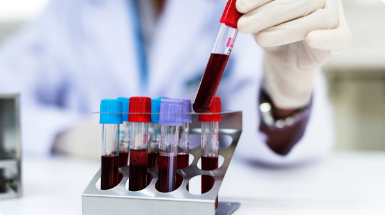Unlike allergology, which formally deals only with sick people, allergy sufferers, we use the test (ELISA IgG) with the ROLE™ program on completely healthy people. At the same time, the results of the test have a preventive nature, which allows a healthy person to exclude foods from his menu that provoke a pathological reaction of his immune system until the emergence of hypersensitivity, which potentially leads to an illness of the body.

Using the methodology in your practice, a permanent positive clinical effect is observed with the control of indicators of systemic inflammation (SR, leukocytes, CRV, etc.). Pathogenetically, this effect is expressed as a decrease in the load on effector immune reactions, which are aimed at eliminating the causative food antigens. This is achieved by following an elimination diet developed according to the “normal-abnormal” criteria. The proposed methodology provides specialists with different profiles an instrument that enables the identification and elimination of the causative food antigens in the prophylaxis of non-infectious chronic diseases.
This is especially important for patients with signs of systemic inflammation, the pathogenesis of many non-infectious diseases such as metabolic syndrome, obesity prevention, modern intestinal-enteropathic disorders and autoinflammatory syndromes. At the same time, the methodology allows determining the state of the immune system and the degree of adaptation of the digestive system to food antigens in the surrounding food environment in healthy people.
A properly performed multicomponent enzyme immunoassay (ELISA IgG) for food antigen-specific G-class immunoglobulins (IgG) accurately shows the concentration of specific antibodies, which are an expression of the interaction of the human immune system (healthy or diseased) from the previous selection of test antigens for each food antigen.
The results of the conducted studies allow us to conclude that the new direction IMMUNODIETOLOGY, based on the correct use of a multicomponent test (ELISA IgG) for food antigens, is a prospective direction of modern dietetics, in which the individual reactions of the body’s immune system to a representative selection of food antigens are physically correctly taken into account.
In more detail in the article “Научное устройствоие”. Rozenstein, A. З., Доктор физико-математических наук, Immunohealth Int. (USA); Cherevko, N. А., Professor, доктор медицинских наук, СибГМУ (РФ); Kondakov, С. Э., Professor, doctor of pharmaceutical sciences, МГУ им. М. В. Lomonosova (РФ)
See the differences in the following 5 points
Ro-Clinic EST uses a patented, correct processing of IgG (Elisa test) analyses, which allows 100% of cases to correctly determine the border between foods as agonists and antagonists. This partially ensures the positive result of the ROLE™ nutrition program in 86-90% of clinical cases. The use of a completely new approach to data selection makes it possible to significantly reduce testing errors related to the incorrect designation of permitted and prohibited foods. Ultimately, this approach leads to a significant increase in the percentage of patients with favorable treatment outcomes in the ROLE™ program.
Unlike all other laboratories, in our method we do not determine individual food-antagonists, but clusters of food-antagonists that indicate the presence or absence of a certain type of intolerance. In the method, individual food antagonists are not mechanically removed from the menu, but they are viewed as MARKERS of certain types of food intolerance. This means that the presence of certain foods on the “red list” shows us the intolerance of certain “passing” antigens, which are also contained in other foods, which must also be removed from the menu, even if they passed the test. In this way, intolerance to red grapes, cherries and cranberries may indicate tannin intolerance. This means that tea, pomegranates, plums, persimmons, etc. must be removed from the menu. In this way, the list of forbidden foods for a given patient in the ROLE™ program can be much more extensive than the “red list” determined by the test. This approach allows to exclude possible allergenic foods from the patient’s menu even on the basis of a limited list of tested foods.
The ROLE™ program is an educational program that includes an educational dietetic and culinary component, but also provides for an interactive connection between the patient and the consultant over a long-term (3-4 months) period. The ROLE™ program is not a temporary diet. It envisages the approximation of the lifestyle to the most optimal for a person and the corresponding local food environment.
The ROLE™ program is not about calorie counting or standard restrictions on certain nutrients. Also, the program does not prescribe starvation or standard restrictions on the volume and time of food consumption.
The ROLE™ program is not about calorie counting or standard restrictions on certain nutrients. Also, the program does not prescribe starvation or standard restrictions on the volume and time of food consumption.

We do everything to make food your delicious medicine! Hidden food intolerance test and individual nutrition program.
© Ro-Clinic EST OÜ
